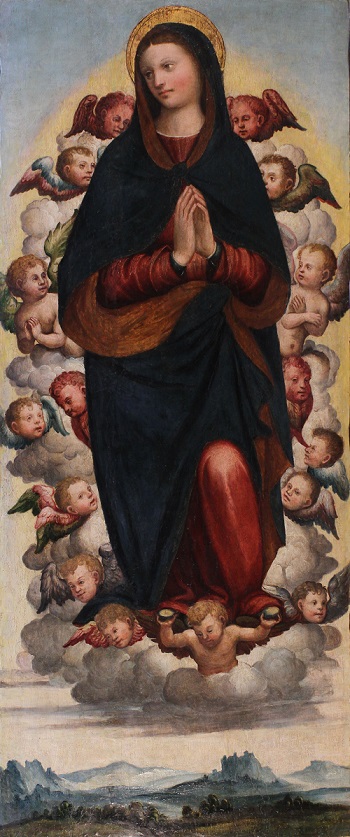While the conservation team at McKay Lodge Conservation Laboratory just outside of Cleveland, Ohio performs recoating of large-scale outdoor sculpture to restoring electronic media artworks, more traditional conservation treatments are also completed at the lab such as Old Master paintings conservation.
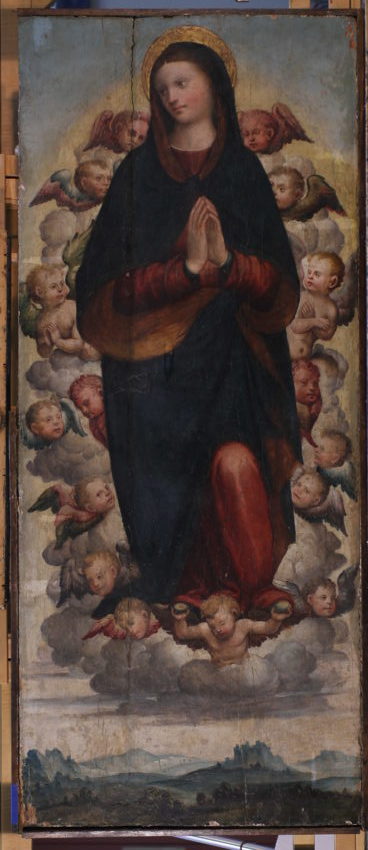
Once such conservation treatment of an Old Master painting includes a recent project by Stefan Dedecek, Conservator of Paintings, Murals, and Polychrome Surfaces, of the Assumption of Madonna. The oil painting is executed in oil on a thick poplar panel. The date of the painting is likely around 1500. It features Virgin Mary with her hands held in prayer. She is surrounded by putti as she floats with them in the clouds above a pristine mountain range.
The Old Masters paintings conservation treatment began with a thorough investigation of the artwork using visual inspection and Ultra-violet induced visible (UV-vis) florescence. It is a non-invasive but powerful diagnostic technique allowing a conservator to observe damages, varnishes and coatings, or previous restoration that might otherwise be concealed under normal illumination. For more complete explanation on the use of UV for conservation documentation, click here.
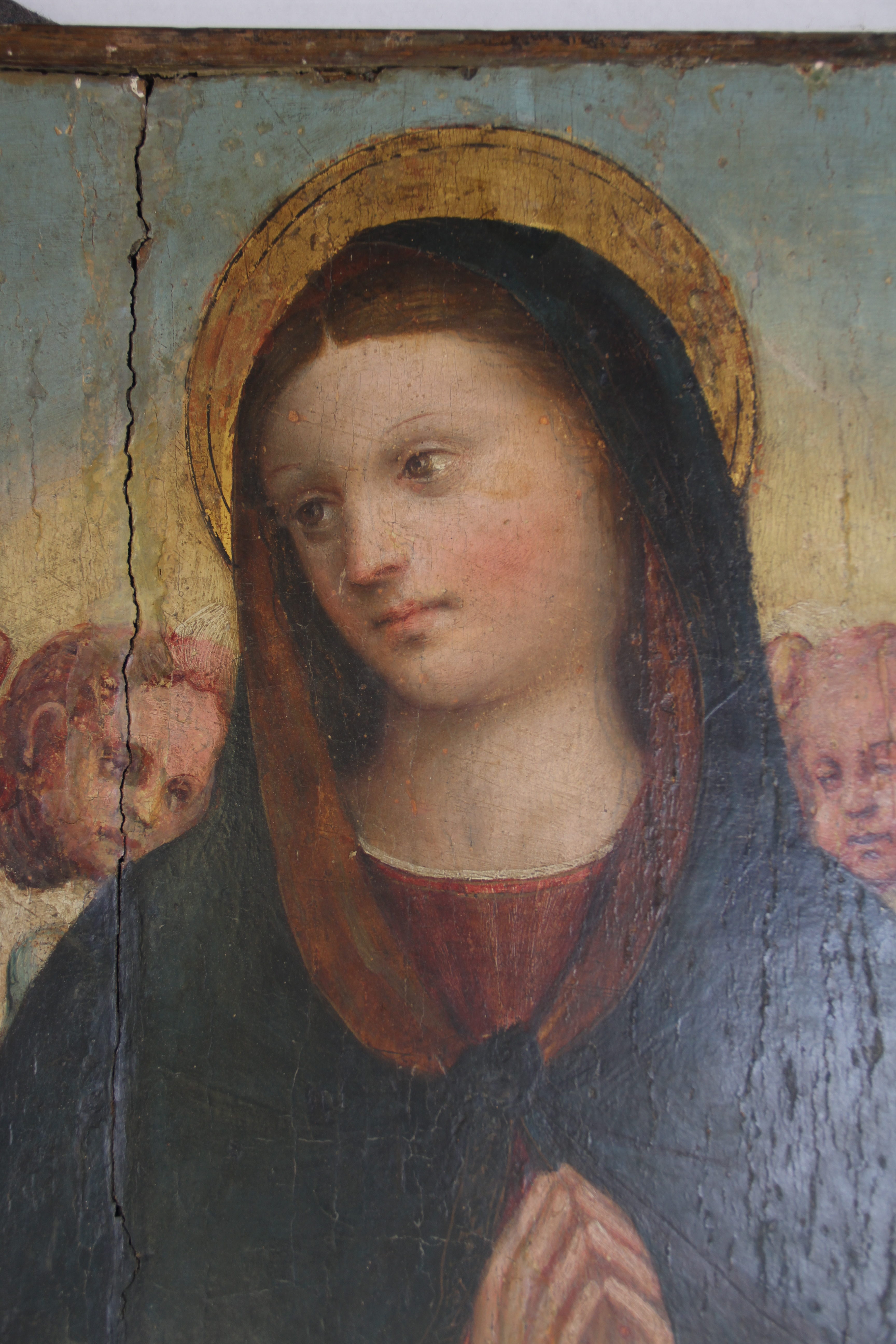
The condition of the painting was poor overall. The surface was obscured by an accumulation of dirt and discolored varnish along with areas of overpaint. Some of the paint film was also loose and flaking. Many losses were along the joins in the panel, caused by the natural expansion and contraction of the wood. The panel itself was distorted and damaged by insects in the past. The accompanying gilded frame was also covered in a layer of dirt and required structural repairs.
The Old Masters paintings conservation treatment was involved due to the condition of the substrate and surface. The procedure began with local consolidation of insecure paint. The lifting paint was set down and the painting was faced with Japanese tissue.
The treatment continued on the reverse of the panel. A layer of metallic paint and wax were reduced using various mixtures of organic solvents. Old fills and repairs notably in splits and gaps of the wood panel were removed using a scalpel.
Structurally the panel was still in precarious condition, so it was the next focus of the old masters paintings conservation treatment. The three oak crossbars of recent repairs were removed fairly easily as well as two butterfly buttons over the splits. The gaps in left after the crossbars were removed were fitted with poplar wood inserts. The new wood inserts were carefully oriented to align along the wood grain of the panel in order not to restrain natural movement of the wood thus preventing cracking of the panel.
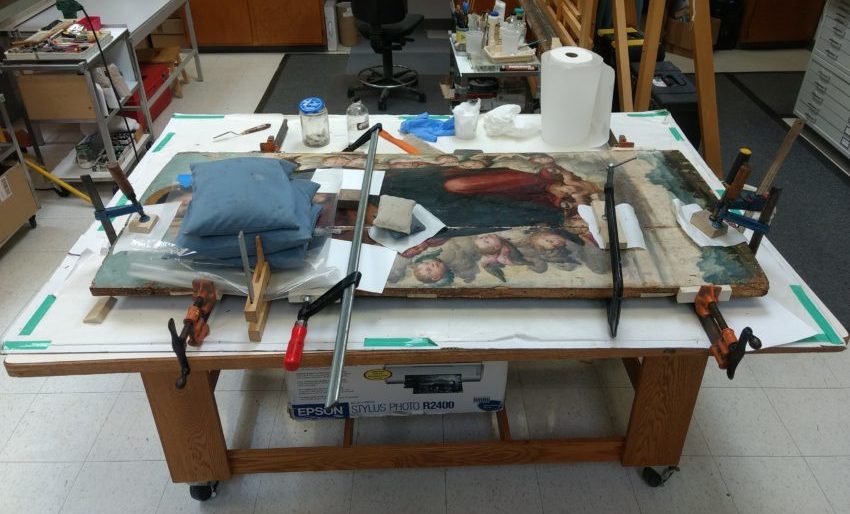
The long vertical joint between the two halves had large apertures. These two halves were carefully reattached, resulting in complicated clamping set-up to rejoin the halves. These structural repairs stabilized the panel and reestablished a “natural” curve of the wood planks and as the panel structural problems were resolved the treatment continued on the front. The temporary facing was removed.
Reduction of dirt, overpaint, and discolored varnish was achieved using polar and nonpolar mixtures of solvents as well as using a detergent and chelating agent solution mixtures.
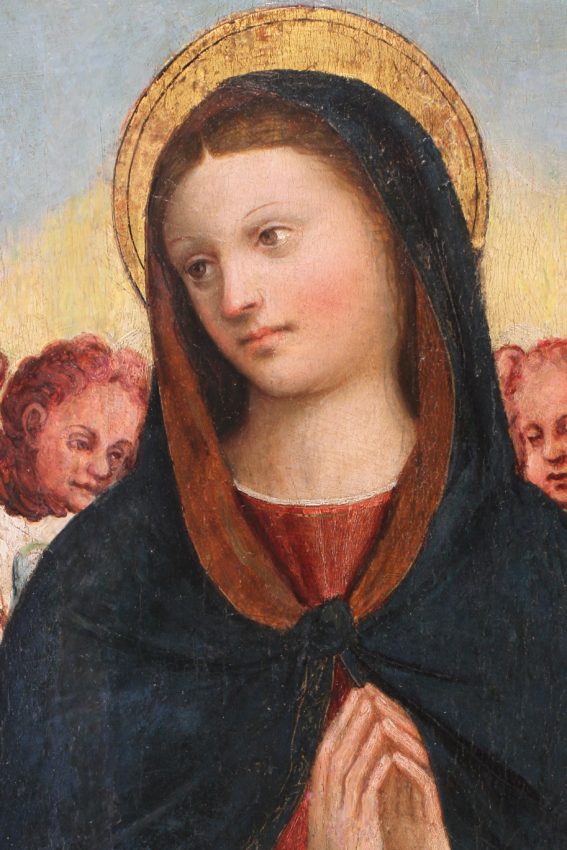
Prior to inpainting, the painting was sealed with a thin isolation varnish. Losses were filled with gesso putty and inpainted. The inpainting was followed with a final protective coat of UV-stabilized varnish.
After the Old Masters paintings conservation treatment, the painting is stable and the overall aesthetic is greatly improved. The image of Madonna is no longer interrupted by paint loss and old restoration materials. The colors appear brighter, and the surface is protected with new varnish and ready for its frame.
The panel was reinstalled back to its frame and held in place using steel spring brackets allowing for more natural movement of the wood as it reacts to its environment. The reverse was protected with a new archival backing board.
